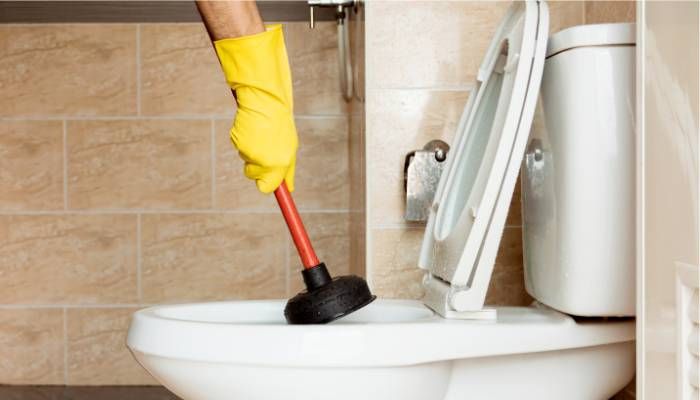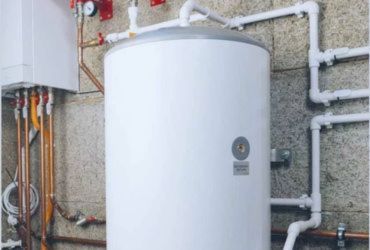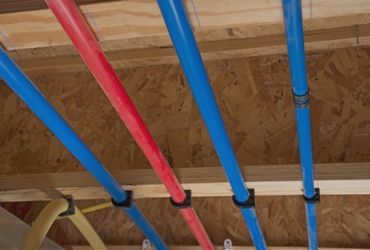The Clogged Toilet: Why Does It Happen & How to Prevent It?
Toilets are the part of our home that we don’t mind much–that is until they stop working! This is when panic and chaos set in. And while it’s common sense that we shouldn’t throw just about anything in the toilet, accidents can happen.
If clogging occurs frequently, you may be wondering “why does my toilet keep clogging, and how can I fix it?” In such circumstances, it’s best to contact a professional to check out the situation. Taking care of the matter incorrectly may lead to serious plumbing issues and expensive repairs.
Let’s see how toilets get clogged and why!
How Do Toilets Get Clogged?
So, how do toilets get clogged? There are numerous explanations for this. The main thing is to identify the major issue behind the blockage and eliminate it.
Let’s take a look at some of the potential reasons for toilet clogs:
The Trap Is Blocked
The trap is the curved channel behind the toilet that connects the drain pipes with the toilet. It is designed to prevent the horrific sewer gasses from passing back into the house through the toilet drain.
It is a useful part of the plumbing system, yet it is the place where many clogs occur. The clogs can often be fixed with a toilet plunger, but sometimes the intervention may be more serious and require a professional’s help.
The Plumbing Vent Is Obstructed
The house plumbing system consists of more than just pipes bringing in water and drainpipes removing wastewater. There are also ventilation pipes that run up and through the roof and keep the pressure stabilized to prevent water from siphoning out. They are responsible for increasing the toilet’s flushing power and allowing fresh air to enter.
The plumbing ventilation system may be clogged by leaves and debris at the outlet and can be cleaned by hand.
The Sewer Backed Up
A sewer backup is something we want to prevent under all circumstances. If there is a clog in the sewer system, wastewater doesn’t drain properly, backing up as a result. The blockage occurs in the connection between the main house sewer line and the municipal sanitary sewers. If you notice slow drains in the house, the sewer line might be an issue.
Why Does My Toilet Keep Clogging: The Most Common Culprits
Problems with your toilet and plumbing system usually point to issues like clogging. We need to learn how to keep toilet from clogging to protect against any further damage.
Take a look at some of the most common cause of clogs:
Excessive Flushing of Toilet Paper
Toilet paper is safe and intended to go through sewage pipelines. However, the use of excessive amounts of toilet paper can clog the pipes due to not being able to dissolve properly. What happens is that the excess paper sticks in the drain lines or the toilet and creates a clog.
There are many brands of toilet paper available on the market today. While some of them are comfortable to use, they may not dissolve well and create big problems.
Flushing Non-Flushable Items
Toilet paper and human waste are the only items that are meant to go down the toilet. Don’t be surprised that your toilet is clogged if you frequently flush down other paper and hygiene products.
Flushable wipes, cotton balls, and Q-tips cause the biggest problems. While you may think that it is safe for these items to go down the toilet, plumbers will disagree.
Using a Low-Flow Toilet
Sometimes, the problem is not what we flush down the toilet, but the toilet itself. Homes that have older low-flow models of toilets can also experience clogs. Because there isn’t enough water pressure to push the material through the system, it remains behind and creates clogs.
What Does It Mean When Your Toilet Keeps Clogging?
You are doing everything by the book, yet a clogged toilet is still a big issue. So what does it mean when your toilet keeps clogging? The reasons may be many and often related to a series of problems. In this case, turn tol a professional and let them inspect the system and identify the problem.
Cummings Plumbing Heating and Cooling have been offering solutions for clogs to customers since 1983. Whether you need toilet repair or installation, a drain replacement, repiping, drain cleaning, and more, we are here to help. Give us a call!
How to Prevent Toilet Clogs?
It is often better to prevent than to cure, so we need to learn how to prevent toilet clogs. Below are some tips on how to prevent clogs from occurring in the future.
Flush Less Toilet Paper
As we mentioned, toilet paper is designed to go through sewer pipes, but it can also be a silent enemy. Using a lot of it at once may lead to clogs. Try to conserve paper by using only as much as needed. If there is a need for more paper, flush frequently to allow the toilet to “do its job.”
Flush Cautiously
The only thing that should be found in a toilet is paper, water, and human waste. The trash can is the place for Q-tips, tampons, sanitary pads, cotton balls, and wipes. You can prevent clogs by placing these items where they belong.
Accidents happen and plumbers do find unimaginable items in toilets, like wallets, phones, coins, toys, toilet bowl fresheners, and more. So, be careful what you bring near your toilet!
Keep the Toilet Lid Closed
If you have shelves packed with items right above your toilet bowl, something may fall inside without you noticing. So, keep the lid closed and prevent this. It’s a very useful habit to have, especially if you have kids that tend to throw things in the toilet.
Watch the Tree Roots
If you are cautious about what goes down the toilet and it still gets clogged, the problem is likely unrelated to you. Having large trees in the yard whose roots grow into the pipes and clog them might be the problem. If this is the case, call a plumber to check and see how you can keep this under control.
FAQ
What do professional plumbers use to unclog drains?
Professional plumbers use diverse tools that aid in clearing clogs. Some of these tools include manual drain snakes, motorized drain snakes, high-definition cameras for drains and sewer lines, and hydro-jetting machines.
Manual drain snakes are used for simple toilet and drain clogs and clearing debris. The more sophisticated motorized snakes are used for the removal of tree root infiltration, but also for clearing sewage, food waste, and grease clogs.
The cameras are a technological advancement, allowing plumbers to look in the pipe interior and locate the cause. The most powerful tool is the hydro-jetting machine, which can remove old and persistent buildups of soap and grease.
Will a clogged toilet eventually dissolve?
It would be nice if a problem could go away after some time, but unfortunately, it will need attention. Most clog material is not soluble in water so it will not go away on its own. Diapers, tampons, flushable wipes, oils, and starches from foods will need to be removed.
There is a slight possibility that the clog may eventually go away on its own if it is caused by excess toilet paper or fecal matter. They may dissolve over time, but it is up to you whether you’d want to leave that clog without handling it.
How do you unclog a toilet when a plunger doesn’t work?
A plunger is always the number-one choice when unclogging a toilet, but there are situations where you don’t have access to one. One possibility is using dish soap to lubricate the clogged pipe so that the debris can slide through easily. If the dish soap trick doesn’t work, pour hot water from a higher level and hope that the force dislodges the clog.
Baking soda and vinegar can also be used as a replacement for dish soap. This combo is known to do wonders in cleaning and removing dirt and debris, so it is worth a try. Let it fizz for 30 minutes and use hot water to push out the clog.
If none of the above works and you are left with a more severe clog, you can try using a drain snake. If you don’t have one, a wire coat hanger will do the job.
Will bleach unclog a toilet?
Drain-clean chemicals have proven to be more effective in unclogging than bleach, which is also a chemical. Known for its cleaning properties and removing stains, it is an option to be considered in removing a clog from your toilet. High in chlorine, bleach is used to break up chemical bonds by releasing oxygen molecules. The same chemical process applies in unclogging the toilet, especially if the clog is made of organic materials or toilet paper.
Pour 2-3 cups of bleach into the toilet and give it 10-15 minutes to start working. Then flush the toilet and hope that it has managed to remove the clog. Be careful not to use the bleach in combination with other chemicals to avoid triggering an unwanted chemical reaction.










